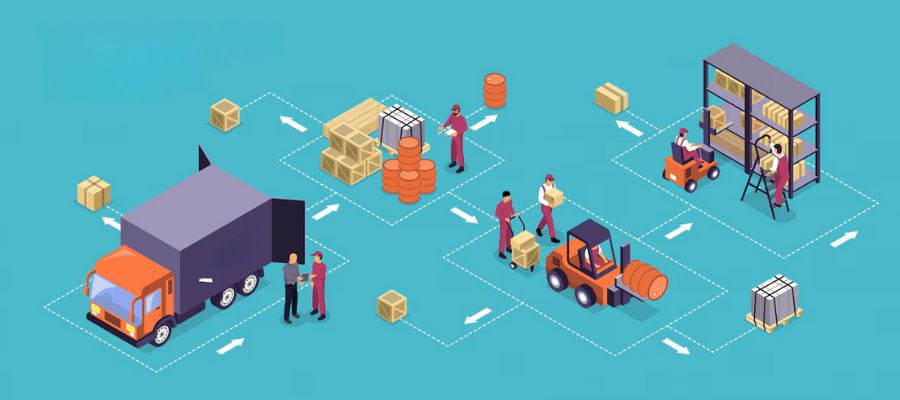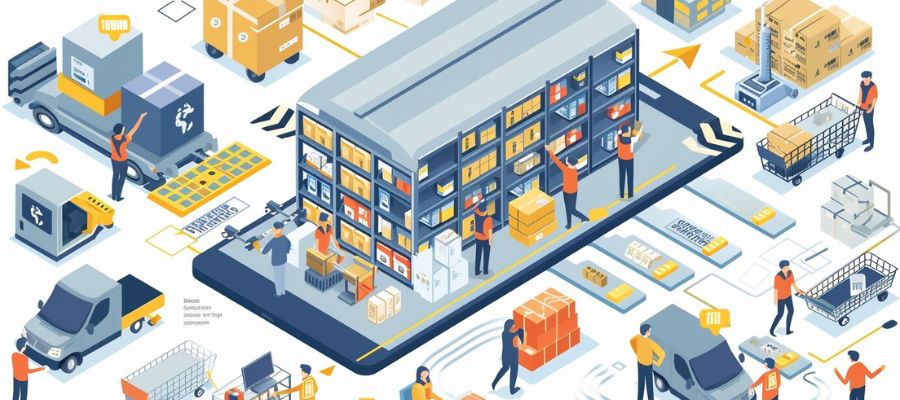In the time of the interconnected business, supply chain resilience has become increasingly crucial for organisational success.
This guide presents a practical project management framework data governance aimed at enhancing supply chain resilience without relying on buzzwords.
We’ll explore strategies to integrate resilience into operations, leveraging concepts such as business integration, data governance, and business intelligence consultancy.
Before diving into the framework, let’s understand the concept of supply chain resilience. This involves the ability of a supply chain to anticipate, prepare for, respond to, and recover from disruptions.
Such disruptions can range from natural disasters to market fluctuations and geopolitical events. Building resilience requires a proactive and strategic approach.
How Does Supply Chain Resilience Work?

Supply chain resilience operates on principles of flexibility, visibility, and collaboration.
It involves designing networks and processes that can absorb shocks and quickly adapt to changing circumstances. This approach ensures that operations continue smoothly despite challenges.
Benefits of a Resilient Supply Chain

A resilient supply chain offers numerous advantages, including reduced risk exposure, enhanced customer satisfaction, improved operational efficiency, and better business continuity.
These benefits directly contribute to business growth consultant and their sustainability.
Assessing Current Supply Chain Vulnerabilities

The first step in our framework is to assess existing vulnerabilities. This involves conducting a thorough analysis of the supply chain, identifying potential risks, and understanding their potential impact on operations. Key aspects to consider include:
1. Mapping the Supply Chain
Visualise and document the entire supply chain network, including suppliers, manufacturers, distributors, and customers.
2. Risk Identification
Identify specific risks such as supplier dependencies, transportation bottlenecks, geopolitical risks, or market volatility.
3. Impact Analysis
Evaluate the potential consequences of disruptions on operations, finances, and customer service.
Building Collaborative Relationships

Next, foster collaborative relationships with stakeholders across the supply chain. Collaboration enhances transparency, communication, and problem-solving capabilities. Key steps include:
1. Supplier Engagement
Establish clear communication channels with suppliers and build mutual trust to facilitate quick responses during disruptions.
2. Cross-Functional Teams
Form cross-functional teams involving procurement, logistics, finance, and IT to share information and align strategies.
3. Business Integration
Integrate resilience considerations into strategic partnerships and contractual agreements with suppliers and logistics providers.
Implementing Risk Management Strategies

Develop and implement robust risk management strategies to mitigate identified vulnerability. This involves:
1. Diversifying Suppliers
Reduce dependency on a single source by diversifying suppliers and developing alternative sourcing strategies.
2. Buffer Inventory
Maintain strategic stockpiles to buffer against supply disruptions and sudden demand spikes.
3. Technology Utilisation
Leverage technology like data analytics and AI for real-time monitoring of supply chain activities and early warning of potential disruptions.
Continuous Improvement and Adaptation

Supply chain resilience is an ongoing process. Continuous improvement is key to staying ahead of evolving challenges. Strategies include:
1. Regular Reviews
Conduct periodic reviews of the supply chain framework to incorporate lessons learned and emerging risks.
2. Scenario Planning
Develop contingency plans based on various disruption scenarios to ensure readiness.
3. Business Intelligence Consultancy
Utilize business intelligence to identify trends and anticipate future challenges, leveraging the expertise of a reputable business intelligence consultancy.
Measuring and Monitoring Resilience

It’s essential to establish metrics and monitoring mechanisms to track the effectiveness of resilience strategies. This includes:
1. Key Performance Indicators (KPIs)
Define relevant KPIs such as supply chain lead times, inventory turnover rates, and response times to disruptions.
2. Real-time Monitoring
Implement tools and systems for real-time monitoring of supply chain activities, enabling proactive identification of potential issues.
3. Benchmarking
Compare performance against industry standards and best practices to identify areas for improvement.
Investing in Training and Capability Building

Enhancing supply chain resilience requires investing in training and capability building across the organisation. This involves:
1. Employee Training
Provide specialised training to employees on risk management, crisis response, and the use of resilience tools and technologies.
2. Skill Development
Foster a culture of continuous learning and skill development to equip teams with the capabilities needed to adapt to evolving challenges.
3. Collaborative Learning
Facilitate knowledge-sharing and collaboration among supply chain partners to build collective resilience capabilities.
Conclusion
In conclusion, building a project management framework for supply chain resilience is essential for modern businesses.
By integrating strategies to enhance resilience without relying on buzzwords, organisations can strengthen their ability to withstand disruptions and drive sustainable growth.
This step-by-step guide provides a comprehensive roadmap for businesses seeking to strengthen their supply chain resilience.
By following these strategies and incorporating the recommended keywords, organisations can navigate uncertainties effectively and achieve long-term success.























